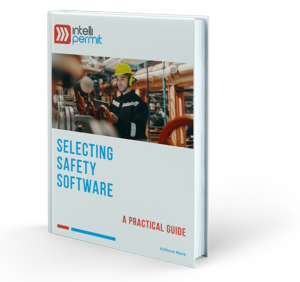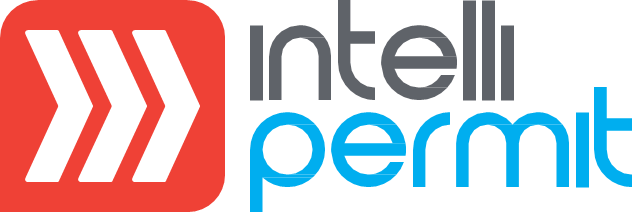Unified Shutdown Planning with Permits
The primary role of a permit to work system is to improve the safety of maintenance activities in hazardous production environments. It does so by ensuring that work is properly authorised, and that hazards are identified and controlled.
This is particularly important during shutdowns when there are many contractors on site unfamiliar with the process, and who are under tight deadlines to bring the plant back online.
Improve shutdown safety and performance with an integrated approach to permit to work
The primary role of a permit to work system is to improve the safety of maintenance activities in hazardous production environments. It does so by ensuring that work is properly authorised, and that hazards are identified and controlled. Many organisations have recognised the significant benefits of investing in computerised permit to work systems: a greater degree of control over the process of securing a safe working environment, improved accuracy in identifying potential hazards, and an independent audit trail.
While the basic principles are well established, it is widely recognised that the permit to work process represents a critical interface between people, complex plant and other management systems. The need for an integrated approach is most acute while preparing for and during large maintenance shutdowns.
In the course of shutdowns risks are elevated with many tasks occurring simultaneously, large groups of contractors on site and the opportunity cost of lost production means that there is intense pressure on all parties to ensure that the shutdown is completed on time.
Let’s explore some of the connections between the permit to work system and wider management systems.
Work Order Management
The correlation between work orders and permits to work is clear. By making work order information available when requesting permits, time to generate the documentation is reduced, the equipment to be worked on is accurately identified and the required isolation points pinpointed
Shutdown Planning
Effective maintenance planning for shutdowns requires proper consideration of many constraints: tool time to complete the work; readiness of hired equipment such as mobile cranes; dependencies between jobs; and availability of supervisors and work crews with scarce skills and so on.
Additionally, the plan needs to take account of the time to rundown equipment to remove material from the process prior to maintenance, as well as time to isolate, make safe and lockout all energy sources. Likewise, once the shutdown is complete, the plan for re-commissioning needs to consider time for inspection, de-isolation and testing.
With automated reports that pull together records from the real-time data acquisition systems for key plant systems,and aligning this with the detailed audit trail of permit signatures from IntelliPERMIT, maintenance planners are provided with a far more accurate picture of where the actual time to perform the shutdown was at significant variance from the planned times for rundown, isolation, job execution and re-commissioning. These detailed shutdown records for equipment are an important resource for planning of future shutdowns. (It is worth noting that our repeated experience has shown that tracking the tool time through the permit audit trail provides far more accurate data than is typically recorded when signing off job cards at the end of shift.)
An accurate record of isolation and de-solation time is similarly important for motivating for the installation of more ef cient isolation and lockout mechanisms.
Condition-based Risk Assessment
In a recent project at a gold mine in Western Australia, use of data available from the plant control systems was taken a step further. A model for mill-liner wear rates was developed based on mill throughput and running hours. The information generated from the model is now used to drive business rules implemented through the permit to work system: when are additional inspections required prior to con ned space work planned for these mills; who is competent to perform these inspections; under what conditions may work proceed? The extensible rules engine in IntelliPERMIT means that this principle can be extended to similar systems where process data is available and risks of injury are high.It is important to understand that such a predictive model is not a substitute for effective lockout procedures. It is designed to arm isolation coordinators and maintenance personnel with as much information as possible prior to entry into a potentially hazardous environment.
Access Control
Physical access control systems are ubiquitous in industrial environments. These systems were initially designed to secure a company’s physical assets and monitor workforce attendance. However, integration with the permit to work system unlocks further value from these systems.
A common complaint is that workers leave site without having signed off their permit or removed their personal danger locks. In linking the computerised permit system with the site access turnstiles, security personnel and workers are alerted if one of their permits is still outstanding when the person attempts to leave site. This relatively simple expedient is highly effective in ensuring that disciple is maintained and that unnecessary production delays are not incurred while waiting for locks to be removed for work that is long since complete.
Identity and Competency
It is particularly challenging to track large numbers of maintenance personnel during intense shutdown periods. There is a signi cant risk that personal present themselves for work without the necessary credentials – possibly resulting in work being performed without proper authorisation or by persons that are not competent
The IntelliPERMIT software provides several options for identi cation of permit signatories: using their Active Directory account; biometric identification using fingerprint scanners; or by swiping their access card. Regardless of the method of identi cation, once the individual has been identified their competencies are checked against the specific requirements of job.
Competency records may be sourced from existing data stored in Learning Management Systems: ensuring that the single version of the truth about what a person has been trained and authorised to do likewise becomes subject to active checking in the permit to work system.
Consolidation and Visibility
Finally,the data consolidated in IntelliPERMIT is automatically reported through to operator logbooks and shutdown reports. The visibility of work in progress and completed is signi cantly improved. Isolation coordinators are alerted when all of the permits utilising a set of isolations under the control of a lockbox/keysafe are complete, so that the process of de-isolation can start without delay.
In drawing together data from multiple systems and incorporating this into the controls implemented by the computerised permit system we see the overall utility of all of the systems increasing. In a modest way, we see Metcalfe’s Law at work here: the value of a network is proportional to the square of the number of nodes in the network. Tasks being managed through the permit to work process are the basic units of organisation during a shutdown. This is the most common process through which a company’s safety policies and procedures get implemented. By leveraging information from work order planning, learning management, identity management and plant data acquisition systems with the permit to work system, the value of the overall management system is significantly enriched.
Article by Scott Bredin
Free Guide - Selecting Safety Software

Learn why safety management software is necessary to support a modern industrial operation, the different types of software applications, and helpful, practical advice on how to undertake a safety software selection process in your own company.
Get started today, download your guide and take the next step towards world-class safety management.
By leveraging information from work order planning, learning management, identity management and plant data acquisition systems with the permit to work system, the value of the overall management system is significantly enriched.

GARY CLANCY, LALLEMAND
Continue Reading
Q&A with IntelliPERMIT Consultant Lungelo Majozi
Explore the advantages of electronic permit to work (e-PTW) systems over paper methods, from faster investigations to specific hazard management. Learn how e-PTW enhances safety, prevents redundant isolations, and ensures accountability. Discover future trends like 3D modeling. IntelliPERMIT automates tasks, improves communication, and reduces costs, making workplaces safer and more efficient.
Powering Safety Innovations: An Exclusive Q&A with IntelliPERMIT Consultant Shirley Breytenbach
IntelliPERMIT transforms permit management with streamlined processes, competency-based approvals, and real-time visibility. Ensure regulatory compliance, enhance worker safety, and boost operational efficiency. The system offers seamless integration, empowering organisations to proactively mitigate safety risks.
Safety Software Implementation Success : An Exclusive Q&A with IntelliPERMIT Consultant Henry Boshoff
Unlock safety software success with IntelliPERMIT: Prioritise key features, secure user buy-in through change management, and foster collaboration. Set measurable goals, leverage incident data for proactive decisions, and ensure intuitive search capabilities. Streamline report generation and simplify scheduling and management of training, drills, toolbox talks, and audits. Overcome adoption challenges by addressing pain points and customizing the software. Enhance user adoption with automation and user-friendly interfaces. Evaluate safety software providers based on knowledge, experience, and adherence to standards—IntelliPERMIT excels. Easily integrate with existing systems through standard APIs. Opt for web-based software for accessibility and usability. IntelliPERMIT enhances safety practices and compliance.



